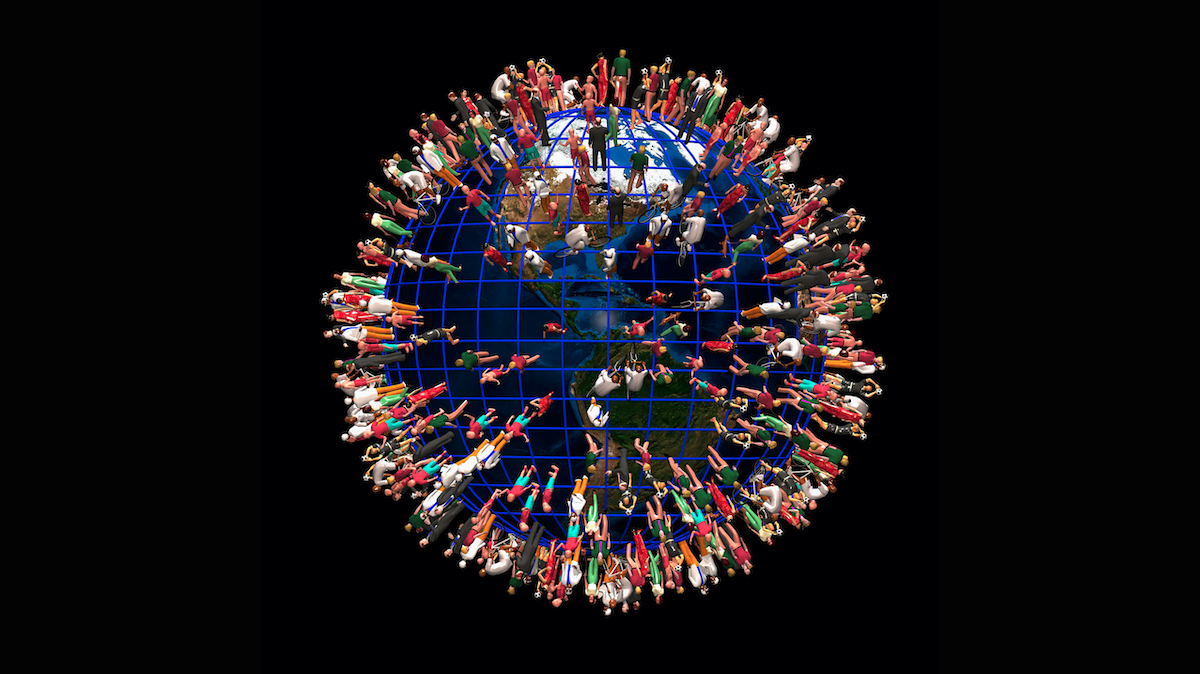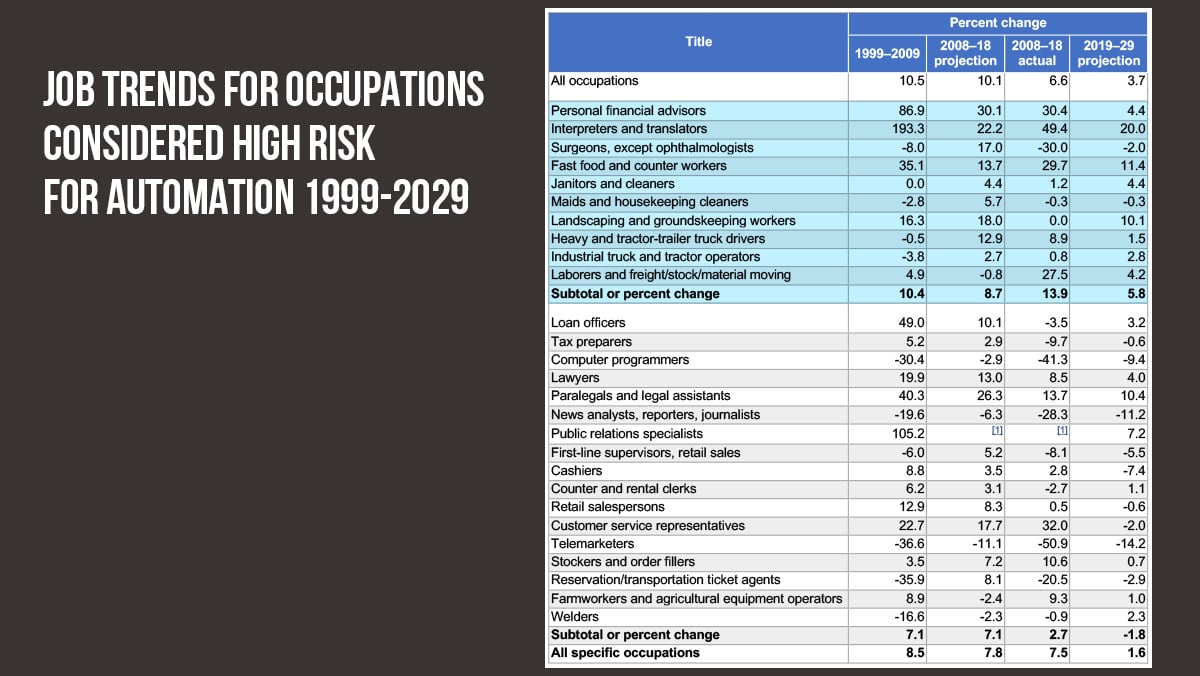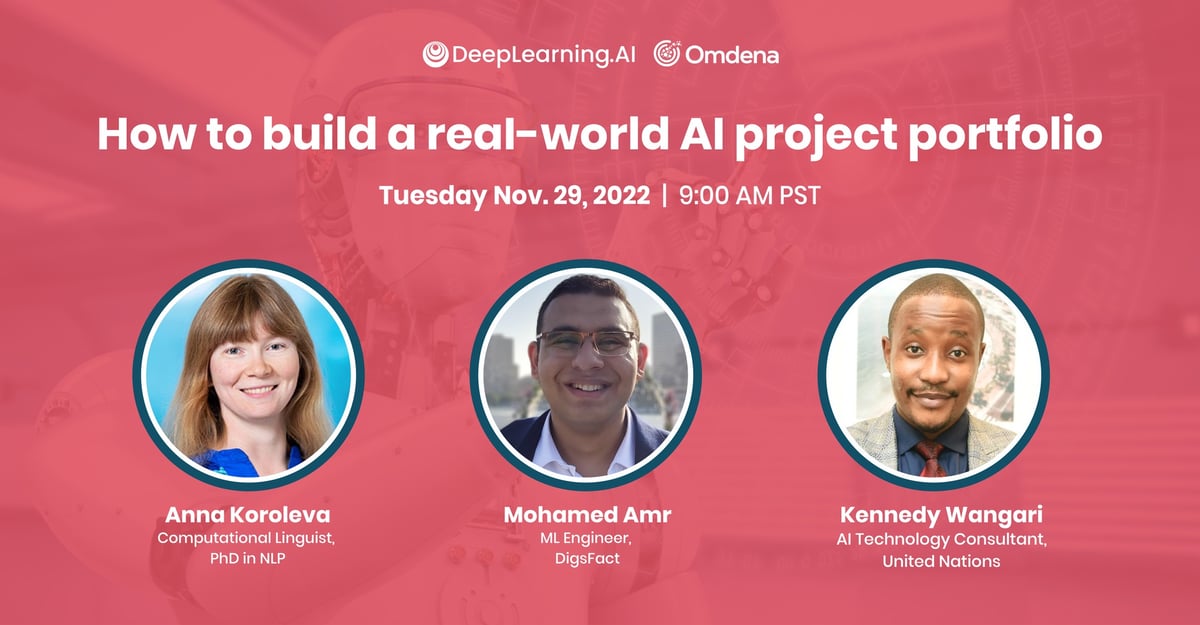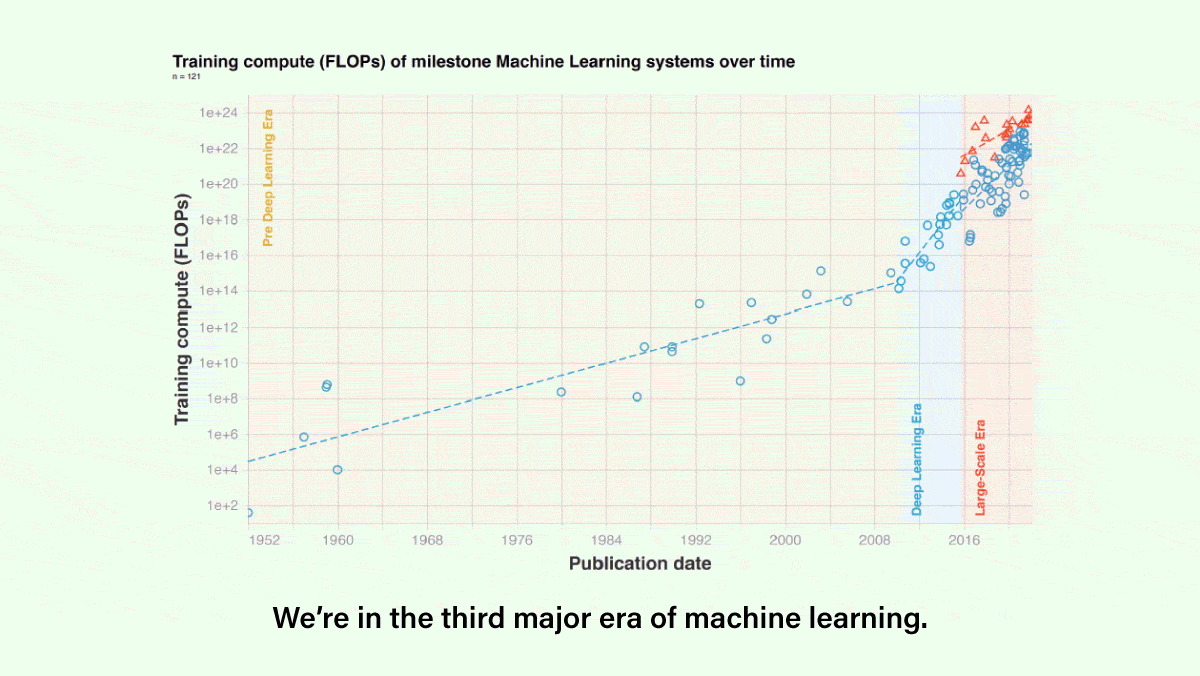Dear friends,
The population of Earth officially reached 8 billion this week. Hooray! It’s hard to imagine what so many people are up to. While I hope that humanity can learn how to leave only gentle footprints on the planet, I’m excited about the creativity and inventiveness that a growing human population can bring.
This is important because we need lots of people to work on the hard tasks ahead of us. For instance, deep learning could not have reached its current state without a large community building on one another’s work and pushing ideas forward. Building applications that will improve human lives requires even more people. Semiconductors are another example: Building a modern chip requires clever effort by many thousands of people, and building the breakthroughs that increase processing power and efficiency as Moore’s Law fades will take even more. I’d like to see a lot more people pushing science and technology forward to tackle problems in energy, health care, justice, climate change, and artificial general intelligence.
Keep learning! Andrew
DeepLearning.AI Exclusive
A Complete Guide to NLPRecent advances in natural language processing (NLP) are driving huge growth in AI research, applications, and investment. Check out our new guide to this high-impact, fast-changing technology. Read it here
News
Does Price Optimization Hike Rents?An algorithm that’s widely used to price property rentals may be helping to drive up rents in the United States. What’s new: YieldStar, a price-prediction service offered by Texas-based analytics company RealPage, suggests rental rates that are often higher than the market average, ProPublica reported. Critics believe the software stifles competition, inflating prices beyond what many renters can afford and adding to an ongoing shortage of affordable housing. How it works: The algorithm analyzes leases for over 13 million units across the U.S. to calculate prices for 20 million rental units daily. Five of the 10 largest property management firms in the U.S. use it. Former RealPage employees told the authors that property managers adopt around 90 percent of its suggested prices.
Behind the news: Automated pricing has had mixed results in real estate. Offerpad, Opendoor, and Redfin use algorithms to estimate a home’s value, and their systems account for around 1 percent of U.S. sales. Zillow shuttered a similar program last year after it contributed to over $600 million in losses. Yes, but: Experts in real estate and antitrust law say that RealPage’s products enable rival property managers to coordinate pricing, a potential violation of U.S. antitrust law. In addition to the pricing algorithm, the company hosts user groups where property managers share feedback.
Why it matters: Advertised rental rates rose 17 percent between March of 2021 and 2022. Several factors contributed to the increase, but automated pricing tools like YieldStar could diminish tenants’ power to negotiate lower rents. We’re thinking: YieldStar’s role in rising prices is unclear, but any automated system that has potential to manipulate markets at a large scale warrants regulatory oversight. There is precedent: In the 1990s, the U.S. Justice Department forced airlines to change a shared pricing algorithm after finding that they had overcharged travelers by $1 billion. The black-box nature of AI systems means that regulators will need new tools to oversee and audit potential AI-driven coordination of prices.
AI Hasn’t Been So Bad for JobsWorries that automation is stealing jobs may have been greatly exaggerated. What’s new: A U.S. government report found that employment has increased in many occupations that may be threatened by automation. Projected versus actual growth: Bureau of Labor Statistics sociologist Michael J. Handel identified 11 occupations at risk from AI. He calculated changes in employment between 2008 and 2018.
Looking forward: Handel’s 13.9 percent estimate is reasonably close to the 8.7 percent rate projected by the Bureau of Labor Statistics at the beginning of that period. The agency’s projection for 2019 to 2029 expects the same occupations to grow by a more leisurely 5.8 percent on average. Handel attributes most of the slowdown to an aging population. Yes, but: The report cites occupations that suffered losses between 2008 and 2018 due, in part, to technologies other than AI: tax preparer (down by 9.7 percent), ticket agent (20.5 percent), and journalist (28.3 percent). And then there are telemarketers, who suffered a 50 percent decline in jobs as regulators clamped down on nuisance calls and — yes — now face challenges from AI systems.
Why it matters: A 2022 U.S. survey of 1,225 people by chat software developer Tidio found that 65 percent of respondents — including 69 percent of university graduates — feared that they soon would lose their jobs to automation. The new report could improve people’s trust in technology by showing how such worries have played out in recent years. It should spur thinking about how to integrate AI safely and productively into workplaces of all kinds.
A MESSAGE FROM DEEPLEARNING.AIAre you looking to land an AI job but not sure what steps to take? Learn how to chart your path during our upcoming panel discussion, “How to Build a Real-World AI Project Portfolio,” on November 29, 2022, at 9 a.m. Pacific Standard Time. RSVP
What the Missing Frames ShowedNeural networks can describe in words what’s happening in pictures and videos — but can they make sensible guesses about things that happened before or will happen afterward? Researchers probed this ability. What’s new: Chen Liang at Zhejiang University and colleagues introduced a dataset and architecture, called Reasoner, that generates text descriptions of hidden, or masked, events in videos. They call this capability Visual Abductive Reasoning. Key insight: To reason about an event in the past or future, it’s necessary to know about events that came before and/or after it, including their order and how far apart they were — what happened immediately before and/or after is most important, and more distant events add further context. A transformer typically encodes the positions of input tokens either one way (a token’s absolute position in the sequence of tokens) or the other (its pairwise distance from every other token), but not both. However, it’s possible to modify these positional encoding styles by producing an embedding for each pair of tokens that’s different from the inversion of each pair — for example, producing different embeddings for the pairs of positions (1,3) and (3,1). This approach captures both the order of events and their distance apart, making it possible to judge the relevance of any event to the events that surround it. How it works: The authors trained an encoder and decoder. The training dataset included more than 8,600 clips of daily activities found on the web and television. Each clip depicted an average of four sequential events with text descriptions such as “a boy throws a frisbee out and his dog is running after it,” “the dog caught the frisbee back,” and “frisbee is in the boy’s hand.” The authors masked one event per clip. The task was to generate a description of each event in a clip including the masked one.
Results: The authors compared Reasoner to the best competing method, PDVC, a video captioner trained to perform their task. Three human volunteers evaluated the generated descriptions of masked events in 500 test-set examples drawn at random. Evaluating the descriptions of masked events, the evaluators preferred Reasoner in 29.9 percent of cases, preferred PDVC in 10.4 percent of cases, found them equally good in 13.7 percent of cases, and found them equally bad in 46.0 percent of cases. The authors also pitted Reasoner’s output against descriptions of masked events written by humans. The evaluators preferred human-generated descriptions in 64.8 percent of cases, found them equally good in 22.1 percent of cases, found them equally bad in 4.2 percent of cases, and preferred Reasoner in 8.9 percent of cases. Why it matters: Reasoning over events in video is impressive but specialized. However, many NLP practitioners can take advantage of the authors’ innovation in using transformers to process text representations. A decoder needs only one transformer to produce descriptions, but the authors improved their descriptions by stacking transformers and using the confidence of previous transformers to help the later ones refine their output. We’re thinking: Given a context, transformer-based text generators often stray from it — sometimes to the point of spinning wild fantasies. This work managed to keep transformers focused on a specific sequence of events, to the extent that they could fill in missing parts of the sequence. Is there a lesson here for keeping transformers moored to reality?
AI’s Year in Review2022 was a big year for AI-driven upstarts and scientific discovery, according to a new survey. What’s new: The fifth annual State of AI Report details the biggest breakthroughs, business impacts, social trends, and safety concerns.
Looking ahead: The authors offer predictions for the year ahead. Among them:
Hits and misses: The authors also graded their predictions from last year. A sampling:
Why it matters: As investors, the authors earn their bread, butter, and Teslas by developing a keen sense of which tech trends have the greatest commercial value. Their perspective may not be omniscient, but it can be helpful to know what the funders are betting on.
Work With Andrew Ng
Director of Finance and Accounting: Landing AI seeks a finance leader to oversee and manage all aspects of financial operations and tax planning. The ideal candidate has a finance and accounting background, experience with managing debt and raising equity, and knowledge of product-led growth strategies in business-to-business software as a service. Apply here
Subscribe and view previous issues here.
Thoughts, suggestions, feedback? Please send to thebatch@deeplearning.ai. Avoid our newsletter ending up in your spam folder by adding our email address to your contacts list.
|


.png?upscale=true&width=1200&upscale=true&name=NLP%20Social%20Graphic%20Cover%20(1).png)




